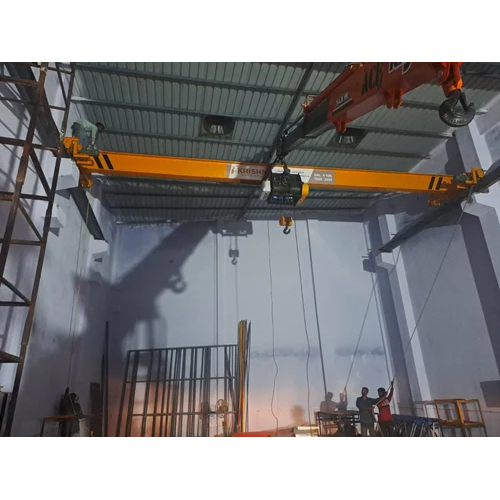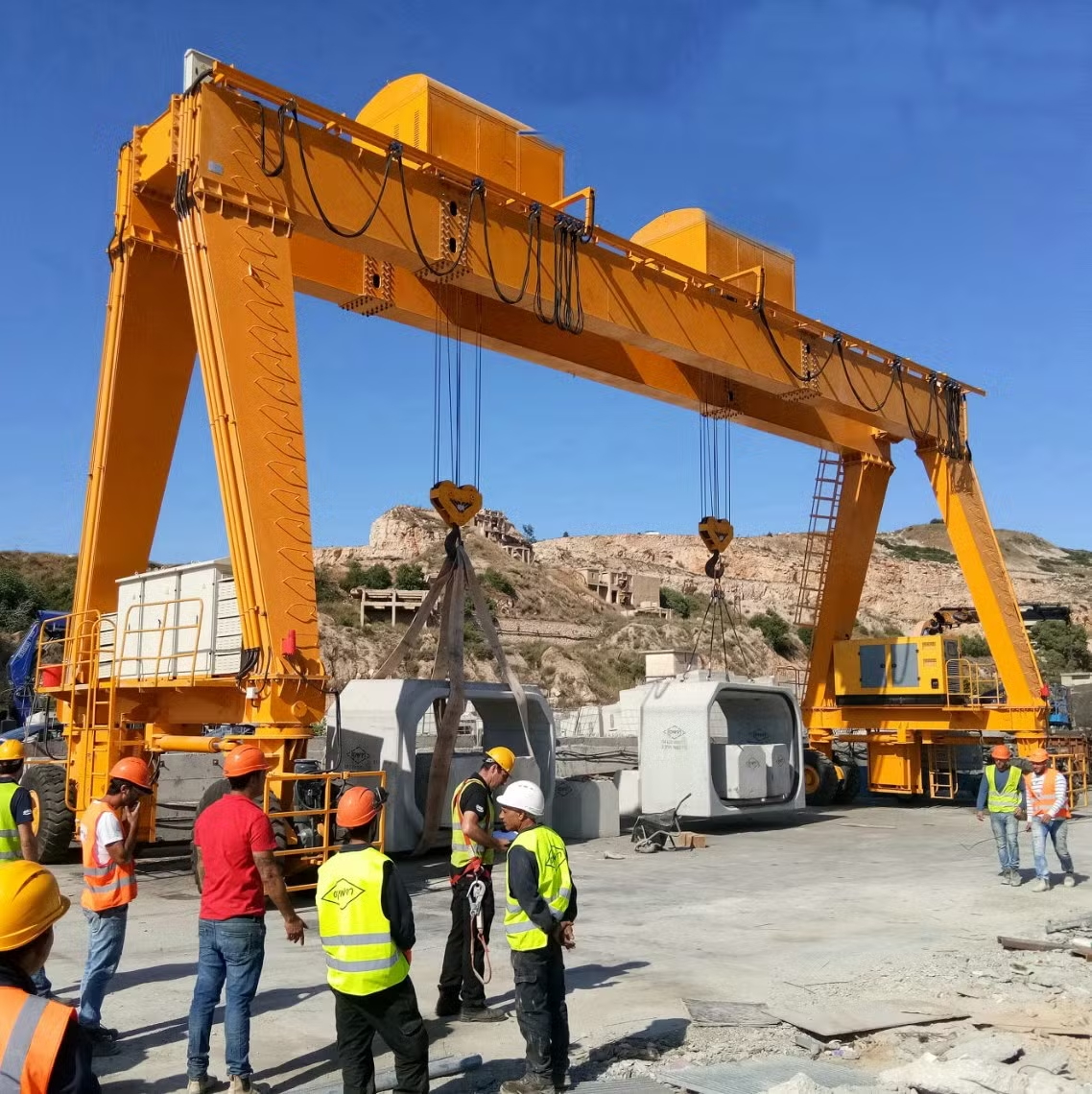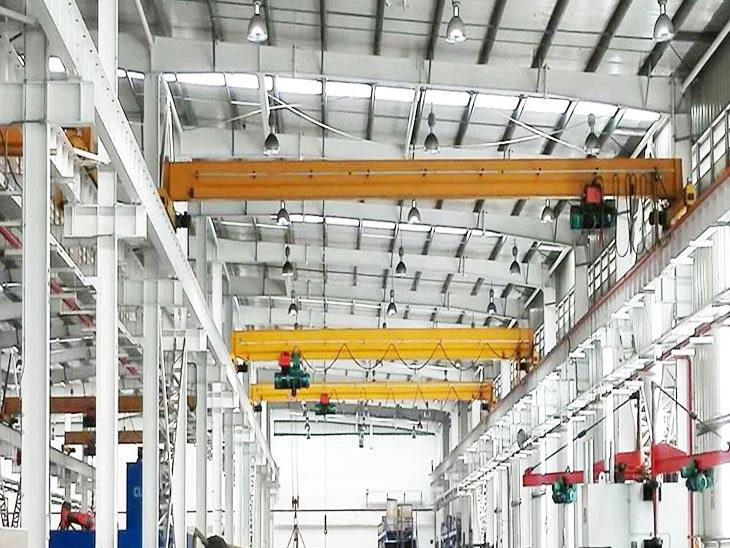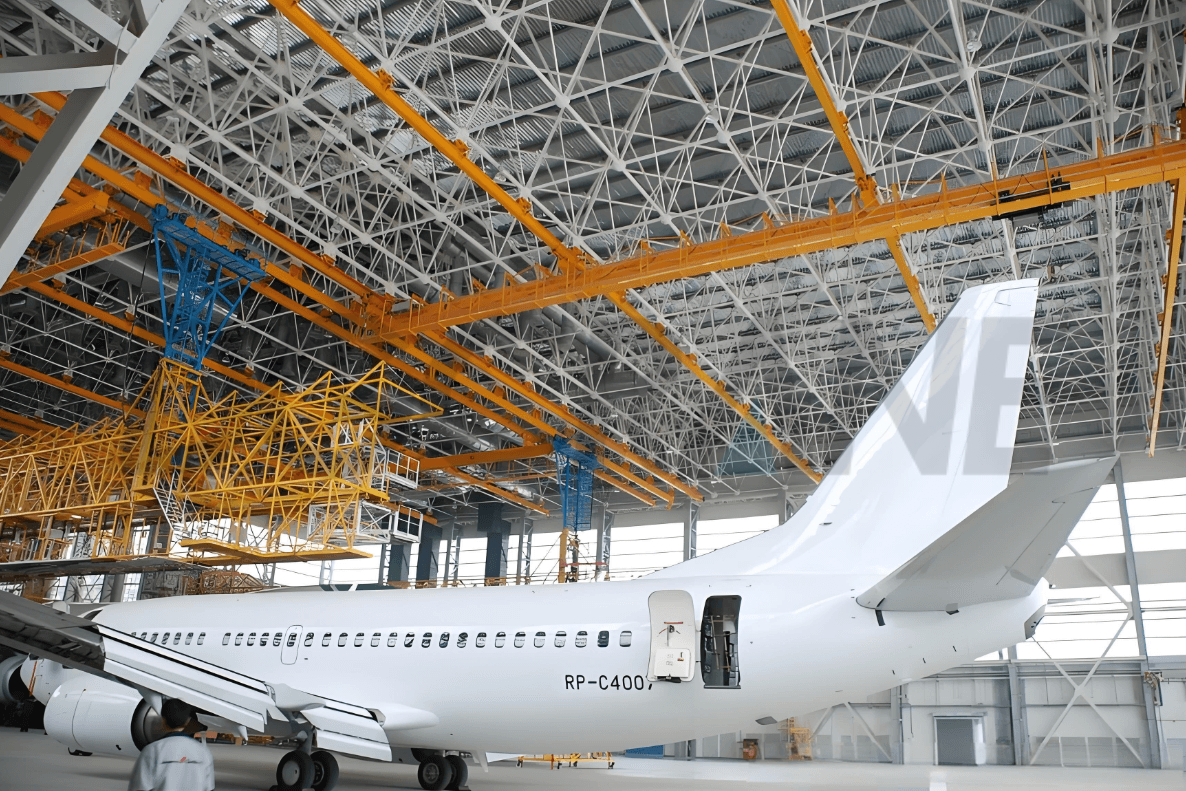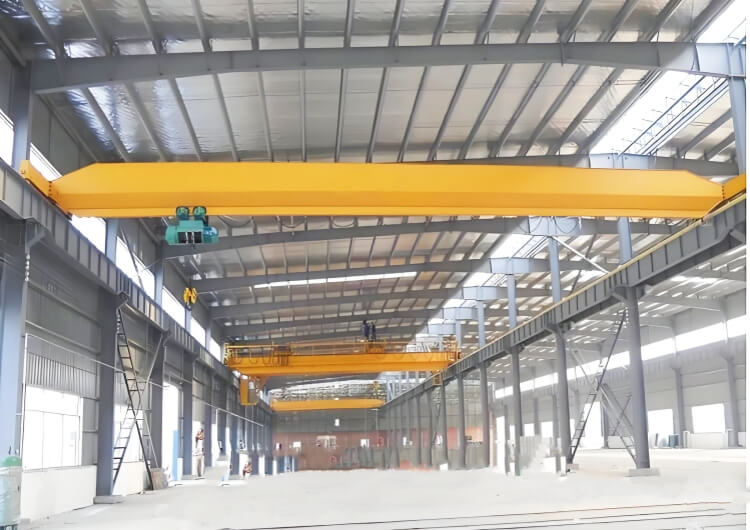European vs Traditional Overhead Cranes: How to Choose the Right Design for Your Workshop
Introduction: Why Crane Design Choice Really Matters
For many factories, steel fabrication shops, warehouses and logistics centers, an overhead crane is not just a piece of equipment – it is the backbone of material handling.
Today, two main design philosophies dominate the market:
-
European-style overhead cranes – compact, lightweight, FEM-standard, highly automated and energy-efficient.
-
Traditional overhead cranes – heavy, robust, simple to maintain and usually cheaper at the beginning.
The choice between them directly affects:
-
How high and how precisely you can lift
-
How much you spend on building steel structure and foundations
-
Your energy bill and maintenance cost over 10–20 years
-
The safety level and comfort of your operators
This article explains the real differences between European and traditional overhead cranes, gives quantitative comparison ranges, shows typical application scenarios, and provides a practical selection checklist and mini case study so you can make an informed decision.
1. What Is a European Overhead Crane?
1.1 Final Assembly / Structural Integration
A European overhead crane (often called FEM-standard or European-type crane) follows modern European design concepts and standards such as FEM, DIN, ISO and GB/T 3811. Typical features include:
-
Compact, low-headroom structure with optimized girders and end trucks
-
High-strength, low-weight steel to reduce self-weight and wheel loads
-
Integrated electric hoist with efficient gearboxes and motors
-
Frequency-controlled drives (VFDs) for hoisting, trolley and bridge motions
-
Enhanced safety and monitoring: overload limiters, anti-collision, skew control, fault diagnostics
A good example of this design philosophy is SLKJCrane’s FEM-standard European overhead crane solutions, which are engineered according to FEM work duty classes for medium- and high-duty industrial applications.
2. Structural Design & Quantitative Comparison
2.1 European Design: Lightweight Strength
Modern European cranes use optimized box girders or welded profiles combined with H-shaped sections. Finite element analysis (FEA) is used to keep stresses within safe limits while minimizing dead weight.
Key structural characteristics:
-
15–30% lower self-weight than many traditional cranes of the same capacity and span
-
10–25% lower wheel loads, reducing the required size of runway beams, columns and foundations
-
Shorter end carriages and compact hoist trolleys, improving hook approach and usable span
-
Lower dynamic loads during start/stop, reducing fatigue on both crane and building structure
2.2 Traditional Design: Heavy but Simple
Traditional overhead cranes commonly use thick welded box girders with conservative safety margins.
Pros:
-
Very robust and familiar to many local fabricators
-
Suitable for extremely heavy loads and harsh outdoor environments
Cons:
-
Higher self-weight → higher wheel loads → heavier building steel and larger foundations
-
Longer end carriages and taller hoist trolleys → poorer hook approach and higher required building height
-
More steel and welding → higher material and fabrication cost, even if the crane selling price looks cheaper
2.3 Quick Structural Comparison Table (Typical Ranges)
| Item | European Overhead Crane | Traditional Overhead Crane | Typical Difference* |
|---|---|---|---|
| Self-weight (10 t / 18 m) | ~13–15 t | ~18–20 t | European lighter by 15–30% |
| Wheel load per wheel | Lower, optimized | Higher, due to heavier structure | European lower by 10–25% |
| Required building height | Lower, thanks to low-headroom design | Higher, due to taller hoist and end trucks | European saves 300–500 mm hook height |
| Runway beam/column sections | Smaller possible | Larger sections often required | Building steel saving 5–15% |
*Values are indicative ranges; exact numbers depend on design, span, duty class and local standards.
3. Lifting Mechanism, Hoist Technology & Duty Classes
3.1 European Electric Hoists
European cranes typically use compact electric wire rope or chain hoists that integrate:
-
Planetary or high-efficiency gearboxes
-
Squirrel-cage motors with VFDs
-
Disc brakes mounted on the motor shaft
-
Modular construction for easy maintenance
These hoists are usually designed according to FEM / ISO duty classes (e.g. FEM 2m, 3m, 4m), which define:
-
Average daily operating time
-
Load spectrum (how often the crane lifts near full capacity)
-
Expected design life in hours or cycles
Advantages:
-
Higher lifting heights in the same building because of compact design
-
Accurate positioning, especially at creep speeds
-
Lower noise and vibration
-
Better protection (overload monitoring, overspeed and temperature protection)
For more details on hoist options, you can refer to specialized pages such as electric hoist solutions for overhead cranes.
3.2 Traditional Hoists
Traditional cranes often use conventional cylindrical geared hoists with:
-
Single-speed or two-speed motors (no VFD)
-
Larger drums, motors and gearboxes
-
Taller layout, reducing available hook height
They are straightforward and proven, but:
-
Limit maximum lifting height in existing buildings
-
Make precise positioning more difficult
-
Cause more mechanical shock during start/stop
-
Require more frequent brake and gearbox maintenance, especially under high duty
4. Motion Control, Operating Efficiency & Safety
4.1 European Cranes: Smart, Smooth, Energy-Saving
With frequency inverters on all main motions, European cranes offer:
-
Stepless speed control from slow creep to full speed
-
Smooth acceleration and deceleration, significantly reducing sway
-
Energy savings: motors run closer to actual demand and can regenerate power during braking
-
Less mechanical shock → longer service life for wheels, rails, gears and structures
Typical safety and monitoring systems include:
-
Overload and over-speed protection
-
Upper and lower hook limits, end-of-travel limits with redundancy
-
Anti-collision and anti-skew control for multiple cranes on one runway
-
Phase loss / wrong phase sequence protection
-
Fault self-diagnostics with alarm logging
4.2 Traditional Cranes: Basic but Familiar
Traditional cranes usually rely on:
-
Fixed-speed motors controlled by contactors
-
On–off braking causing noticeable jerks
-
Basic overload relays and travel limit switches
They can still work reliably, but:
-
Positioning accuracy depends heavily on the operator
-
Load sway and shock are more common
-
Higher risk of mis-operation in fast-paced lines
-
Faster wear of mechanical components, increasing maintenance and downtime
5. Cost Comparison: Initial Investment vs Lifetime Cost
5.1 European Overhead Cranes
-
Initial investment: typically higher, due to optimized steel structure, branded electrical components and automation.
-
Lifetime economics:
-
Building steel and foundation savings due to reduced wheel loads
-
10–20% lower energy consumption for high-duty applications
-
Fewer breakdowns and shorter maintenance stops
-
Longer service life of critical components
-
For plants running multiple shifts or with energy-intensive processes, the extra upfront cost is often paid back within a few years through lower operating expenses.
5.2 Traditional Overhead Cranes
-
Initial investment: attractive and lower, especially from local fabricators.
-
Long-term considerations:
-
Heavier cranes require stronger buildings and larger foundations
-
Higher energy usage during acceleration and constant-speed running
-
More frequent repairs and component replacements
-
Potential production losses caused by unscheduled downtime
-
In low-duty, non-critical applications the lifetime gap may be small. But in continuous or near-continuous operations, traditional cranes tend to be more expensive over time.
6. Application Scenarios & Real-World Conditions
6.1 Where European Cranes Shine
European overhead cranes are ideal when you need:
-
Low-headroom retrofit projects
-
Existing workshops with limited roof height
-
Need to increase hook height without rebuilding the structure
-
Desire to install a crane above existing production lines or utilities
-
-
Steel structure vs concrete buildings
-
In steel structure buildings, lighter crane self-weight and wheel loads allow smaller columns and roof beams.
-
In concrete buildings, reducing crane loads helps optimize column sizes and foundation blocks.
-
-
High-duty workshops (FEM 2m–4m)
-
CNC machining and fabrication lines
-
Automotive and machinery assembly plants
-
Process cranes working multiple shifts per day
-
-
Precision and clean handling
-
Mould and tool handling
-
Equipment installation and maintenance
-
Components that must not be damaged by shock or sway
-
For retrofit projects focusing on hook height and space utilization, low-headroom designs are particularly valuable. SLKJCrane’s low-headroom single-girder crane retrofit guide explains how to gain extra lifting height and working area in existing factories.
6.2 Where Traditional Cranes Still Make Sense
Traditional cranes are still a good choice when:
-
Loads are extremely heavy and the environment is harsh, for example:
-
Steel mills and foundries (scrap charging, ladle handling with special designs)
-
Shipyards, heavy fabrication yards, large outdoor gantry systems
-
Mining and bulk material handling with dust, heat, moisture and severe duty
-
-
Precision is less critical than pure toughness – moving ingots, slabs, crude structures or bulk materials.
-
Local maintenance teams are very familiar with traditional components and prefer simple electrics and mechanics.
-
Budget is extremely tight, and duty cycle is low (occasional or backup crane).
In many real projects, the final solution is a combination:
-
European cranes for main production lines where efficiency and precision matter
-
Traditional cranes for auxiliary or extremely harsh heavy-duty areas
7. Practical Selection Checklist: European vs Traditional
When you plan a new crane or retrofit, review the following points:
-
Duty cycle & work class
-
Multi-shift, high-duty, FEM 2m–4m → prefer European
-
Low-duty, occasional use → traditional may be acceptable.
-
-
Building and headroom conditions
-
Low roof or existing building → European low-headroom design
-
New heavy industrial hall with robust frames → both options possible.
-
-
Required precision and product value
-
High-value or delicate loads → European with VFDs
-
Rough bulk handling → traditional works well.
-
-
Energy price & environmental targets
-
High electricity price or carbon-reduction goals → European for energy savings.
-
Low energy price + low duty → difference less critical.
-
-
Budget & financing horizon
-
Only upfront budget considered → traditional can be chosen with clear awareness of higher operating costs.
-
Lifetime ROI considered → European usually wins.
-
-
Maintenance capabilities
-
Access to trained technicians and spare parts → European is safe.
-
Remote areas with limited technical support → a simpler traditional crane may be safer.
-
8. Mini Case Study (Conceptual Example with Numbers)
A manufacturing plant plans a 10 t, 20 m span overhead crane for a new workshop.
Option A – Traditional Crane
-
Self-weight: ~19 t
-
Each wheel load: ~120–130 kN
-
Building steel and foundation sized for heavy crane loads
-
Single-speed motors, higher peak currents and energy use
Option B – European Crane
-
Self-weight: ~14–16 t (around 20–25% lighter)
-
Each wheel load: ~95–105 kN (about 15–20% lower)
-
Building steel tonnage reduced by ~8–12% compared with Option A
-
VFD-controlled motors reduce energy consumption for crane motions by 15–20%
-
Smoother operation extends service life of wheels, rails and gearboxes
Over a 15-year period, the plant expects:
-
Building and foundation savings during construction
-
Annual energy savings of several thousand kWh
-
Less downtime and lower maintenance cost
Even though the European crane is around 10–20% more expensive upfront, the payback period is estimated at 4–6 years, after which Option B becomes clearly more economical.

Expert in Overhead Crane/Gantry Crane/Jib Crane/Crane Parts Solutions
Eileen
With 20+ years of experience in the Crane Overseas Export Industry, helped 10,000+ customers with their pre-sales questions and concerns, if you have any related needs, please feel free to contact me!
FAQs About European vs Traditional Overhead Cranes
Not always, but usually the initial purchase price is higher because of optimized structures, higher-quality components and automation. However, for medium- to high-duty applications, the lifetime cost (energy + maintenance + downtime) is often lower than for a traditional crane.
In many cases, yes. Common upgrade steps include:
-
Replacing old hoists with modern electric hoists and VFDs
-
Adding frequency control to trolley and bridge motions
-
Improving safety devices (overload limiters, anti-collision, monitoring)
But if the old structure is too heavy or inefficient, a full crane replacement with a new European design may be more economical.
Depending on the design, a European low-headroom single-girder crane can often give you 300–500 mm extra hook height compared with many traditional designs. In retrofit projects, this extra space can make the difference between “cannot install” and “perfectly workable” without altering the building.
For ladle handling, charge cranes and very heavy duty hot metal applications, many users still prefer specially designed heavy traditional or hybrid cranes with strong thermal protection. For downstream areas such as coil handling, finished product warehouses or maintenance shops, European cranes are often the better, more efficient choice.
Latest Blog
Lorem ipsum dolor sit amet, consectetur adipiscing elit, sed do eiusmod tempor incididunt ut labore et dolore magna aliqua
5 Ton Overhead Crane: Complete Selection Guide | SLKJCrane
5 Ton Overhead Crane: Complete Selection Guide for Modern Workshops | SLKJCrane A 5 ton overhead crane is
20 Ton European Standard Gantry Crane for Precast Beams in Chile | SLKJCrane
20 Ton European Standard Gantry Crane Delivered to Chile Precast Beam Factory A precast concrete beam manufacturer in
European vs Traditional Overhead Cranes – SLKJCrane
European vs Traditional Overhead Cranes: How to Choose the Right Design for Your Workshop Introduction: Why Crane Design
Overhead Cranes for the Aviation Industry | SLKJCrane
Overhead Cranes for the Aviation Industry: Hangar-Ready Solutions for Assembly, MRO, and Paint Shops Aviation assembly lines and
Contact Us Now
Have questions about our cranes or need help?
Reach out to our friendly team for expert support and guidance.
We are here to help you power your journey towards a greener future !
Address: Crane Industry Park, Xinxiang City Henan Provice

